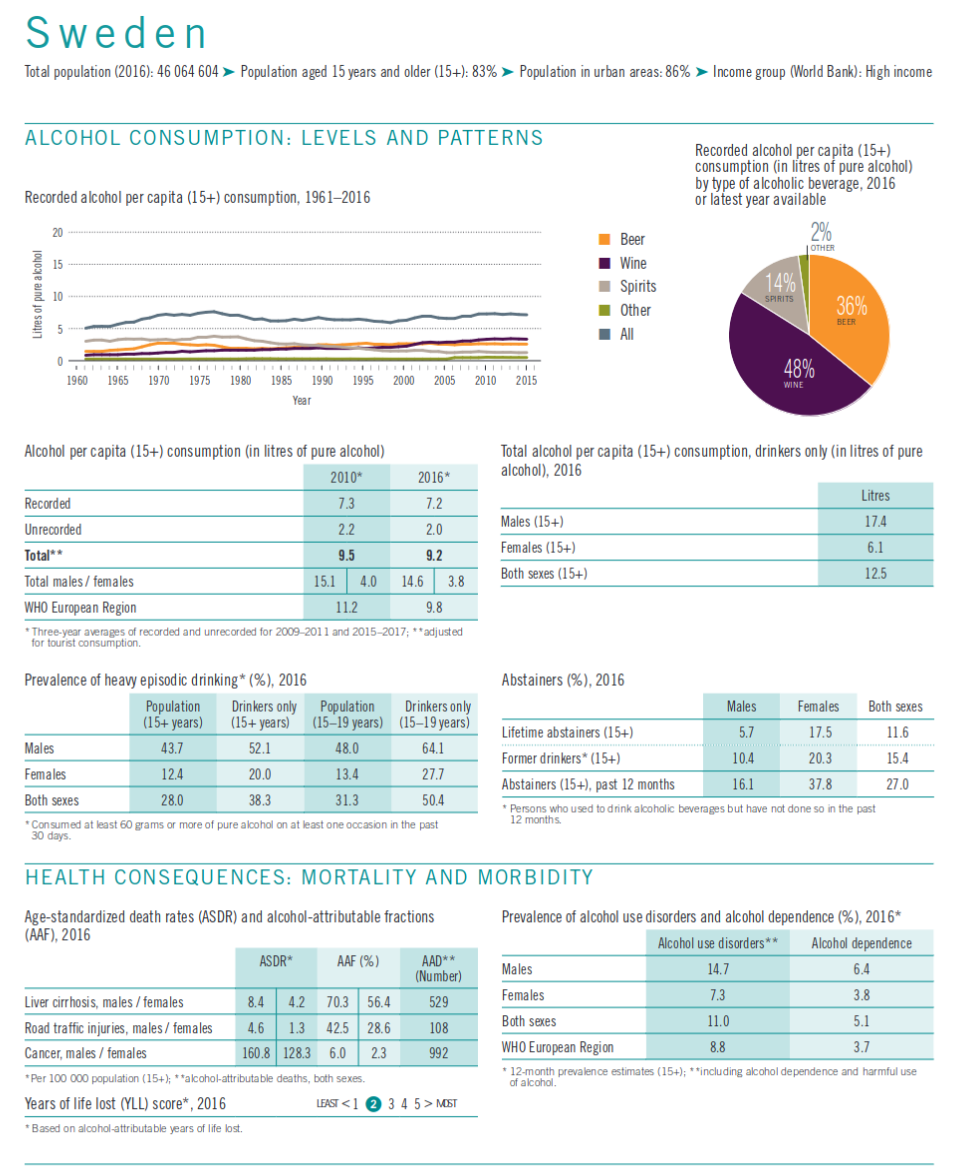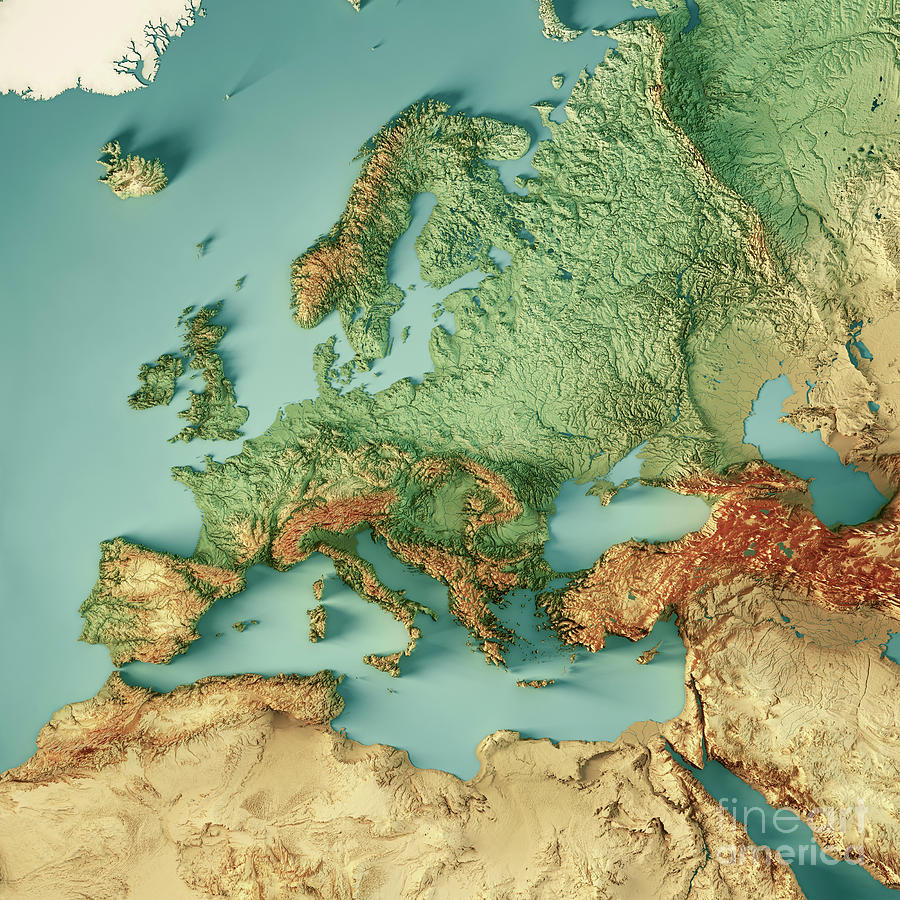For people surprised by the UK, here is the 2018 report: https://www.who.int/publications/i/item/9789241565639
It says that the recorder alcohol consumption by percentage was 35.7% wine and 35.0% beer, so a close one.
I was a bit surprised by the wine in Sweden. I sometimes feel like an outcast with my wine on AWs and other outings. It seems that most people around me prefer beer. Maybe it’s a matter of selection bias since I tend to be around the same group of people.
Found this table from the source, wine seems to be quite ahead!

The diagram is the amount of pure alcohol. Beer typilally contains 3.5 % - 5 % alcohol and wine 12 %, thus the consumption of beer in litres is larger than wine.
However, I was also surprised how much wine (with or without alcohol) is consumed in Sweden considering its price.
Edit: phrasing
Pretty sure in sweden supermarket sold beer maxes out at 3.5% alc if i remenber that right.
Yes, beer with up to 3.5 % you can buy in a supermarket. Beer above 3.5 % is called strong beer (starköl) which you can only buy at Systembolaget, the governmental alcohol store. Considering a large part of the beer is light beer (lättöl) or folks beer (folköl) below 3.5 %, the amount of beer to cover the 36 % pure alcohol is even higher.
“Pure” ? You mean generally 40 ethanol?
No, the calculation is like 0.5 litre beer with 5 vol.% alcohol contain 25 ml pure (100 %) alcohol and these 25 ml go into the statistics as alcohol from the consumption of beer.
I would have thought that 10 years ago, but wine has become a lot more popular since then. I know it’s partly my age and the age of people I mingle with but I’ve noticed it for younger people too when I’m out and about, common to see groups of ~20 year olds with those 1l or 3l tetra pak wines during weekends.
How is Russia not spirits? Did they stop drinking Vodka or something?
No, they mix vodka with beer. The beer has a higher proportion of course.
I demand this be overlaid against the potato/tomato map!
Marking for Slovenia is wrong. I do have statistical data from our statistical agency and it is not even close: 8.5l/person/year of vine and 26.5/person/year of beer (including non-alcohol).
Arguably, vine has higher alcohol content (~11.5%) compared to beer (~4.9%), but even even if we look at “alcohol consumed from wine/beer per person per year”, we get 0,9775L from vine and 1,2985 from beer.
These findings are in agreement with my intuition based on me seeing what people drink.
Thank you for coming to my ted talk.
Source stat.si, year 2018 (latest available): https://pxweb.stat.si:443/SiStatData/sq/23566
As the numbers for beer from stat.si do not differentiate between alcohol free and usual beer, its bold to assume the weighted (by share of consumption) average beer contains 4.9 vol.% alcohol unless you know that it may be totally uncommon to drink non-alcoholic beer.
True. It is uncommon, I’d guess every 10th beer is non-alcoholic. But then there is also radler, with lower alcohol content, which would probably represent 3 out of every 10 beers.
deleted by creator
Does the UK drink wine at the pubs or something? I don’t live there, but from all the UK media I consume, beer is almost always the drink.
wine is likely more popular at home, and some people have a weird thing about women drinking beer.
I’m genuinely shocked that people drink more wine than beer in Denmark. Considering Tuborg and Carlsberg both come from there, and the amount of beer I see people drink publicly, it seems genuinely doubtful to me.
The title of the graphics is a bit misleading, as it’s not the amount of wine, beer or spirits which is most in each country, it is the the amount of (pure) alcohol from wine, beer or spirits. And one often can see people drinking wine in the Nordics.
Ok so it’s by pure alcohol and wine is typically about twice the alcohol than beer so I would guess by just amount beer is still a bit more.


